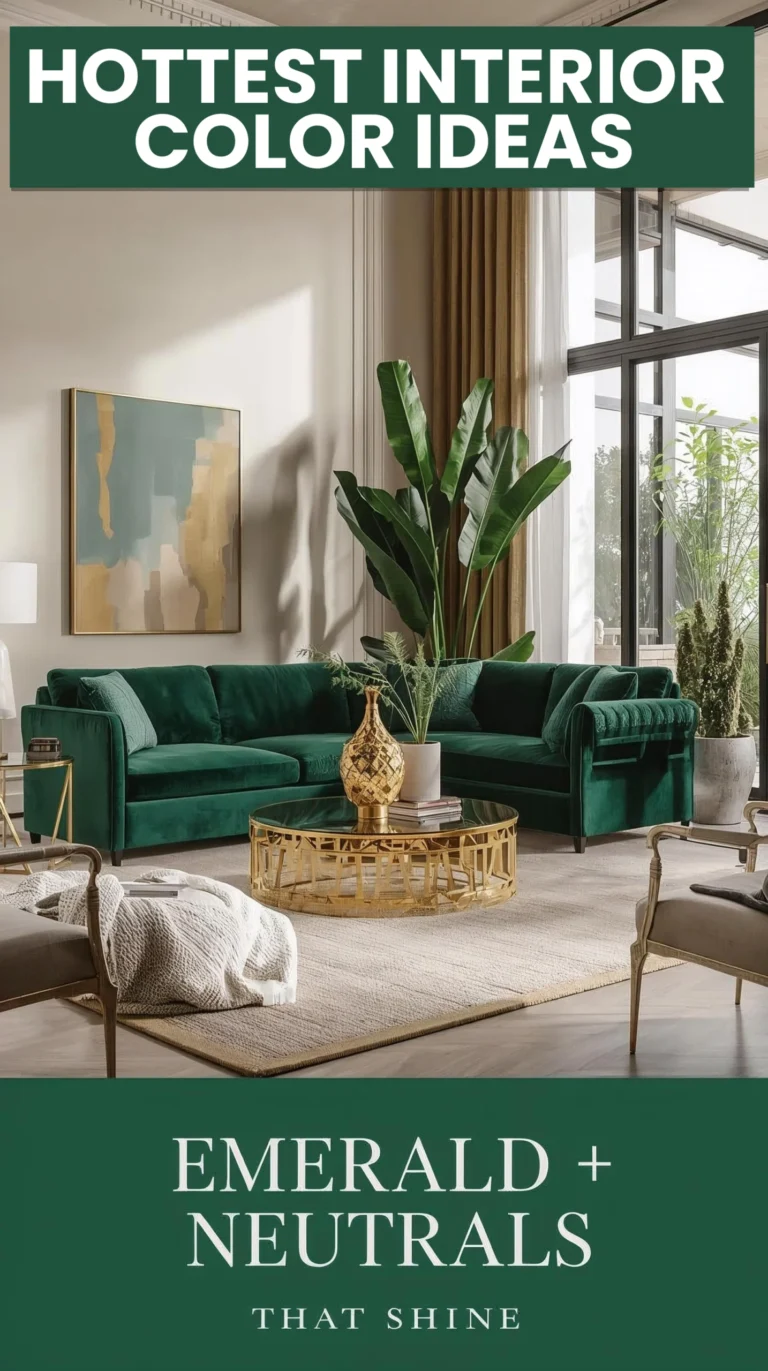Interior Design Trends: 16 Inspiring Ideas to Transform Your Home
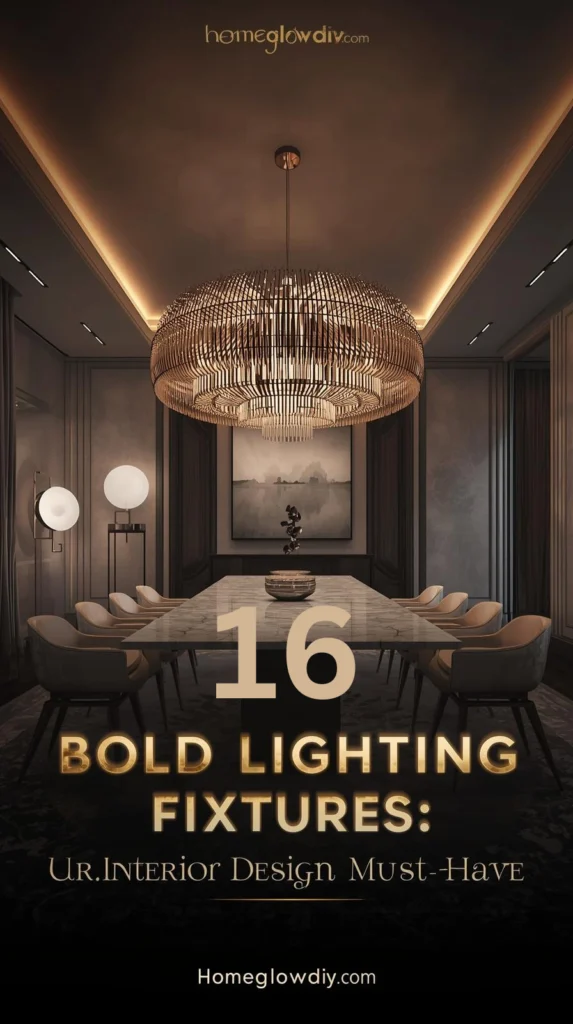
Interior design is constantly evolving, and staying updated with the latest interior design trends can help you create a stylish, comfortable, and functional home. In the USA, many homeowners are seeking designs that blend modern convenience with timeless comfort. From earthy palettes to bold lighting, these trends bring new ways to refresh your living spaces without needing a complete remodel. Whether you’re planning a big renovation or just small changes, these 16 interior design trends will inspire you with practical, actionable ideas you can try right away.
1. Biophilic Design
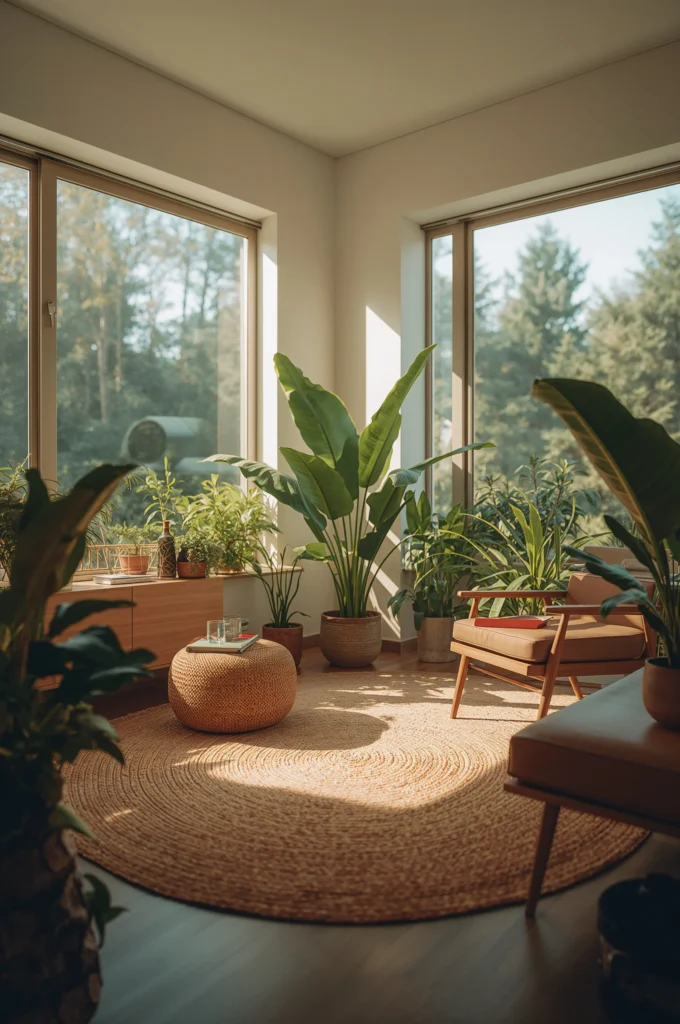
Biophilic design is one of the most talked-about interior design trends, focusing on bringing nature indoors. This idea revolves around creating spaces that mimic the calming and restorative qualities of nature. Adding indoor plants such as fiddle leaf figs, monsteras, or snake plants instantly infuses freshness into your home. Large windows that allow natural light to flood the room can make the space feel open and airy. Materials like reclaimed wood, stone, and jute add texture while maintaining an organic feel. For a simple start, create a plant corner or add hanging planters in the living room. If you live in a small apartment, even a few potted plants or a vertical garden can help you embrace this interior design trend. Beyond aesthetics, studies show biophilic interiors reduce stress and boost mood, making it both beautiful and beneficial.
2. Earthy Color Palettes
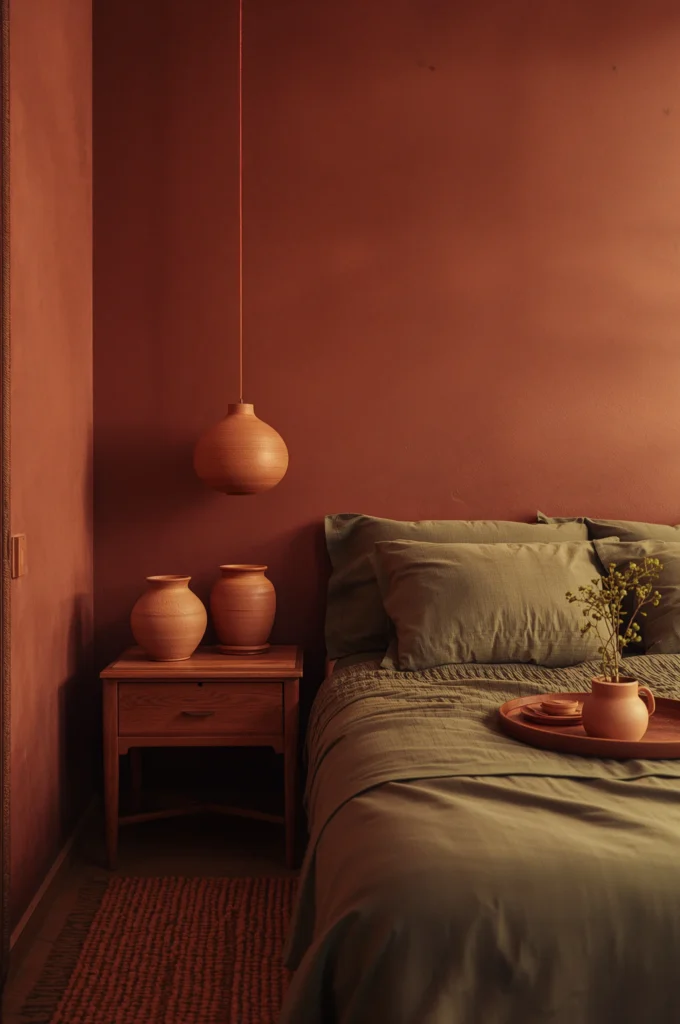
An earthy color palette has become a leading interior design trend in the USA, reflecting a desire for grounding and warmth. Shades of terracotta, olive green, beige, clay, and burnt sienna bring natural comfort into the home. These tones are versatile, pairing well with rustic, bohemian, and even modern minimalist interiors. For example, painting an accent wall in terracotta can instantly transform a plain room. Earthy tones also look stunning when paired with natural fabrics such as linen, cotton, and wool. Accessories like clay pots, woven baskets, or rattan chairs enhance the grounded aesthetic. If you’re not ready to repaint, add earthy tones through throw pillows, rugs, or artwork. This interior design trend resonates because it connects people with nature, making any space feel cozy, balanced, and timeless.
3. Bold Lighting Fixtures
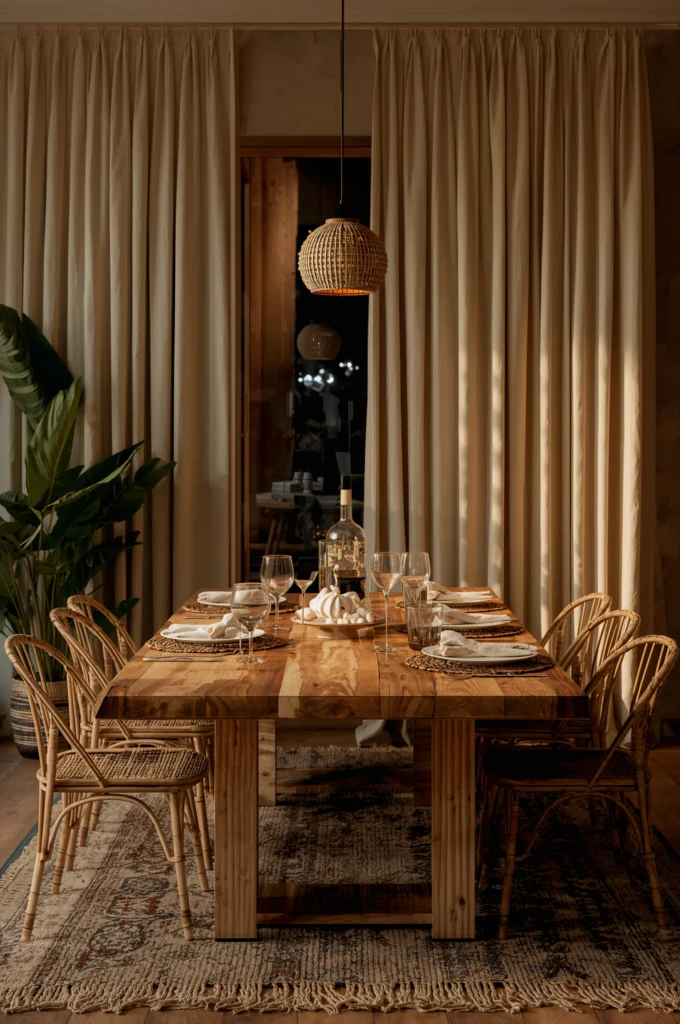
Lighting is no longer just functional—it’s a focal point, making bold lighting fixtures a rising interior design trend. Oversized chandeliers, sculptural pendant lamps, and dramatic floor lamps can instantly elevate a room. A statement light fixture adds personality while anchoring the overall design. For example, in a dining room, a large chandelier draws the eye upward, creating a luxurious feel. In modern living rooms, arc floor lamps provide both style and practical illumination. Layered lighting—mixing ceiling lights, wall sconces, and table lamps—adds depth and flexibility. When choosing fixtures, consider mixing metals like brass and matte black for a chic look. Even in smaller spaces, a bold lamp can make a big impact without overwhelming the room. This interior design trend allows you to express creativity while ensuring your home feels inviting and well-lit.
4. Sustainable and Eco-Friendly Materials
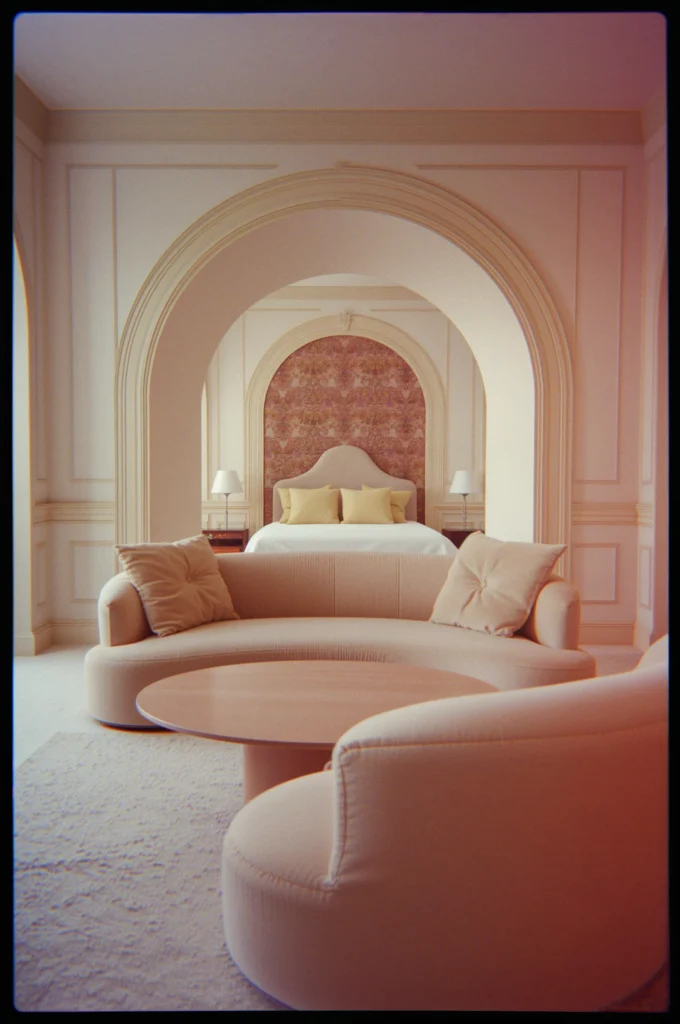
Sustainability has become an essential interior design trend as more homeowners prioritize eco-friendly living. Using recycled wood, bamboo, cork, and organic fabrics not only benefits the environment but also creates a healthy home. For example, bamboo flooring is durable, affordable, and renewable, making it a popular choice in modern homes. Cork, known for its softness, makes excellent wall coverings or flooring. Recycled metal or glass accents also fit perfectly into eco-conscious interiors. Furniture made with sustainable materials often has a timeless appeal, meaning you won’t need frequent replacements. Even small changes, like switching to organic cotton curtains or jute rugs, help reduce your carbon footprint. This interior design trend aligns beauty with responsibility, proving you don’t need to sacrifice style for sustainability.
5. Vintage and Retro Revival
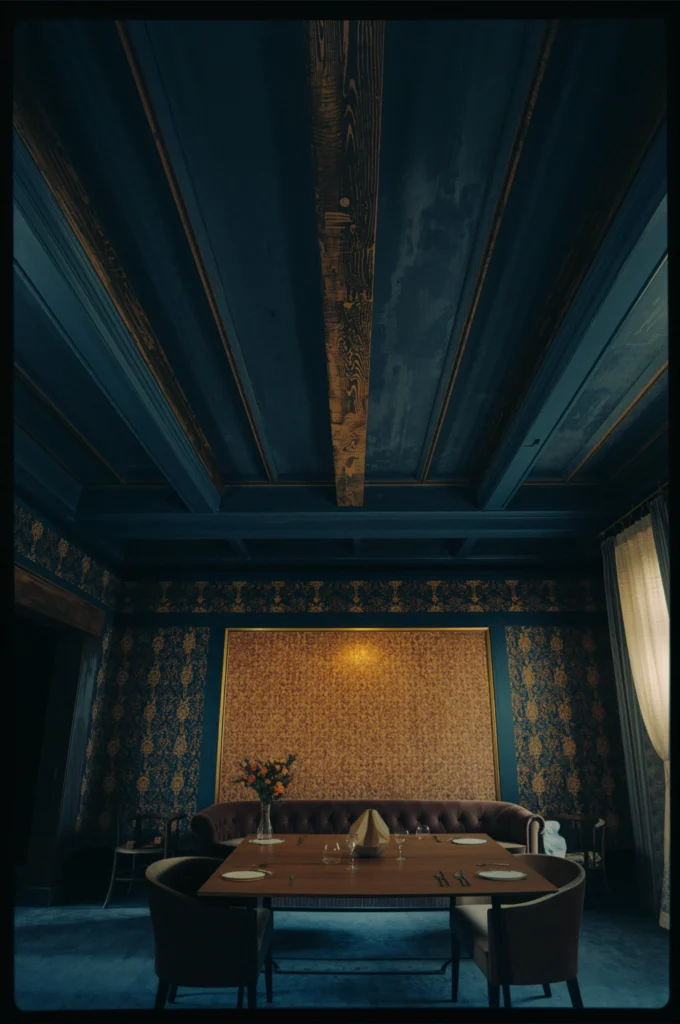
The charm of the past is returning in today’s interior design trends, with vintage and retro-inspired spaces gaining popularity. Think bold patterned wallpapers, mid-century modern furniture, and colorful accent pieces. A retro-style velvet sofa in mustard yellow or teal can be a striking focal point. Mixing old and new creates balance—pairing a vintage coffee table with modern lighting ensures your home feels curated, not outdated. Thrift stores and antique shops are great places to find unique retro pieces that add character. Another tip is to mix retro prints, such as geometric or floral, with neutral tones for harmony. This interior design trend lets you express individuality and nostalgia while keeping the home stylish and comfortable.
6. Multifunctional Spaces
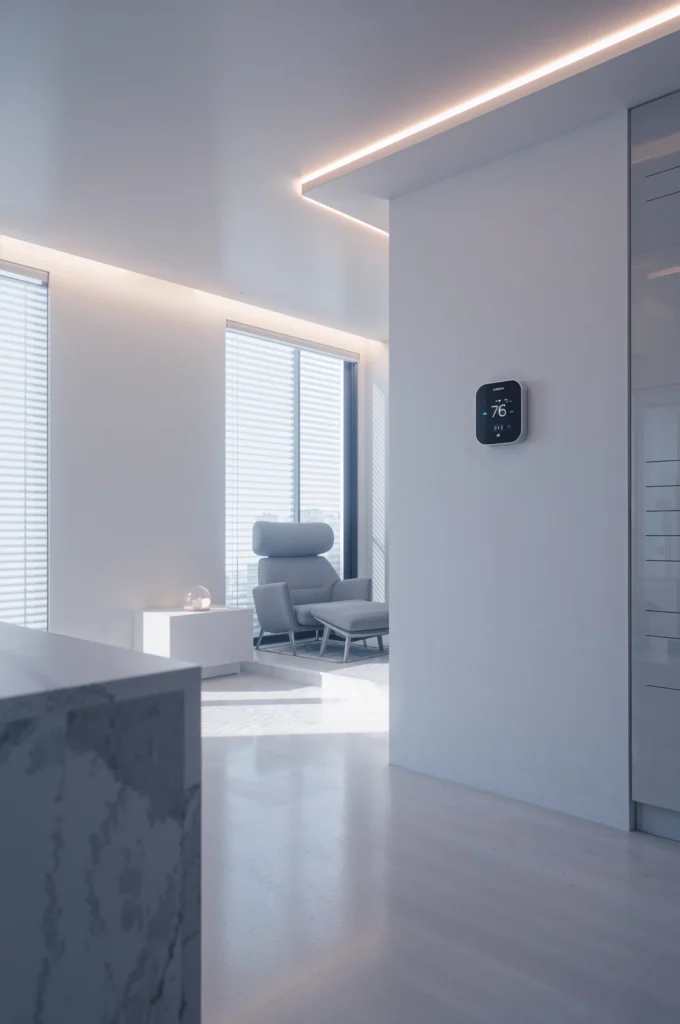
As more people in the USA work from home, multifunctional spaces have become an essential interior design trend. Homes are being reimagined to serve multiple purposes—offices double as guest rooms, kitchens include small study nooks, and living rooms transform into workout areas. The key is smart furniture, such as fold-out desks, sofa beds, and modular storage. For example, a dining table can be used for family meals during the day and function as a work desk at night. Zoning with rugs or shelving helps define each area without permanent walls. Multifunctional spaces maximize every square foot, making them especially valuable in small apartments. This interior design trend emphasizes flexibility, efficiency, and practicality while ensuring homes remain stylish.
7. Minimalist Aesthetic with Personal Touches
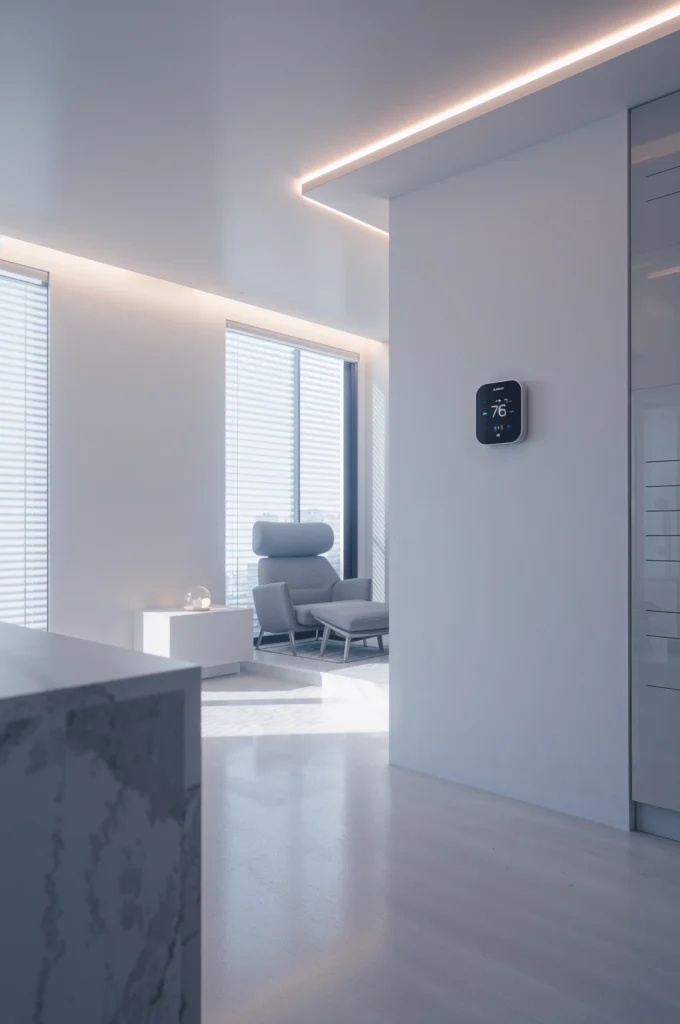
Minimalism remains a popular interior design trend, but it has evolved into a warmer, more personal version. Instead of cold and stark spaces, today’s minimalism incorporates soft textures, warm neutrals, and personal décor. The goal is simplicity without sterility. For example, you might keep furniture sleek and functional while adding a few sentimental items like framed photos or heirloom décor. Decluttering is key, but curated objects prevent the home from feeling empty. Neutral palettes like white, gray, and beige dominate, while wood accents and textiles add coziness. Minimalism with a personal twist allows your home to feel both serene and uniquely yours. This interior design trend balances functionality with warmth, making it ideal for modern American lifestyles.
8. Statement Walls
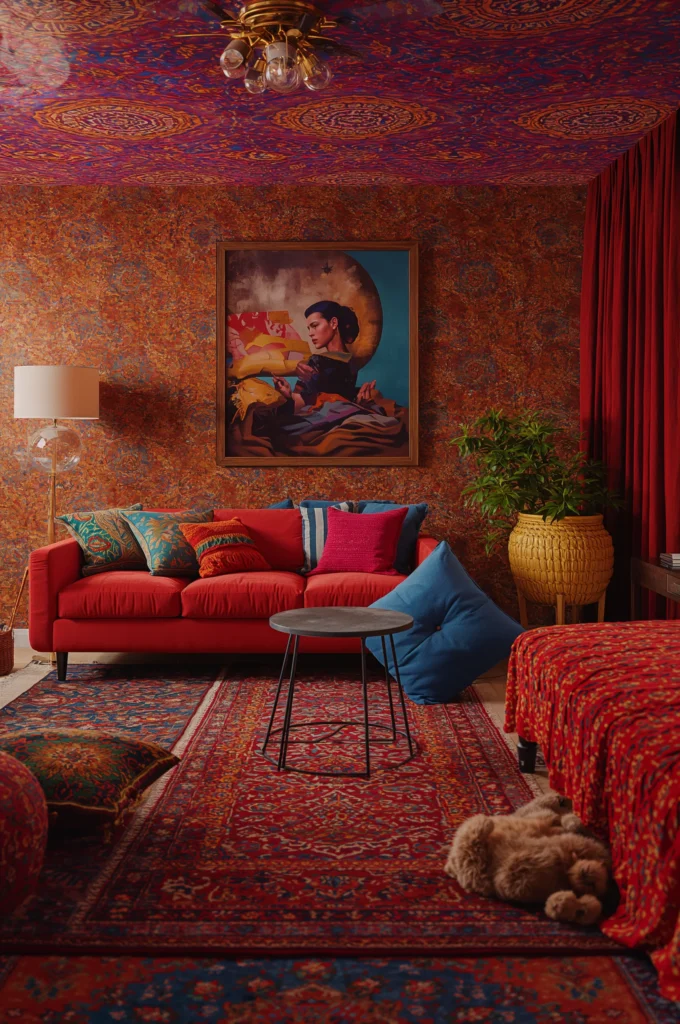
Statement walls are a bold interior design trend that lets homeowners showcase creativity. Accent walls can be created with paint, wallpaper, wood paneling, or even murals. A navy-blue accent wall in a bedroom can create drama, while botanical wallpaper in a living room adds vibrancy. For DIY lovers, painted geometric designs or textured finishes provide affordable ways to make a statement. If you want something subtler, shiplap or reclaimed wood paneling offers texture without overwhelming the room. Statement walls also work well in small spaces by adding visual interest without clutter. This interior design trend is versatile, letting you experiment with color and texture while keeping most of the room neutral.
9. Open Shelving in Kitchens
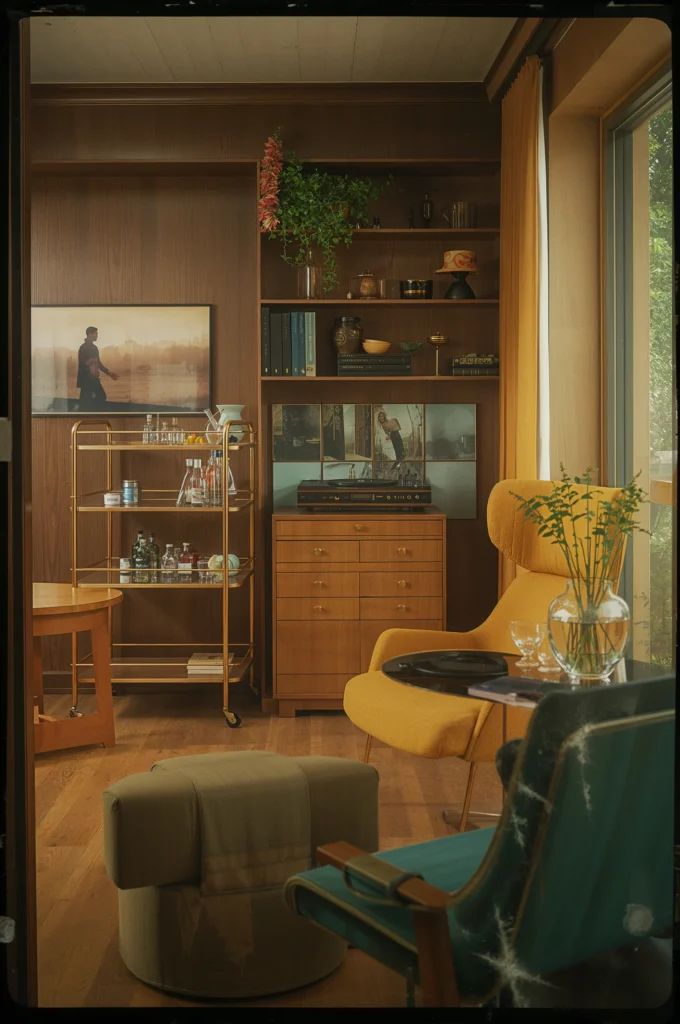
Open shelving continues to dominate as an interior design trend in kitchens. It’s both practical and stylish, allowing you to display dishes, glassware, and decorative items. White shelves paired with wood accents create a fresh farmhouse feel, while sleek black shelving suits modern spaces. Open shelving encourages organization, as everything is visible. To keep it functional, mix everyday items with a few decorative pieces like plants or cookbooks. Glass jars filled with grains or pasta add charm while remaining useful. The key is balance—too much clutter can overwhelm the look. This interior design trend is ideal for small kitchens as open shelves make the space appear larger and more open.
10. Smart Home Integration
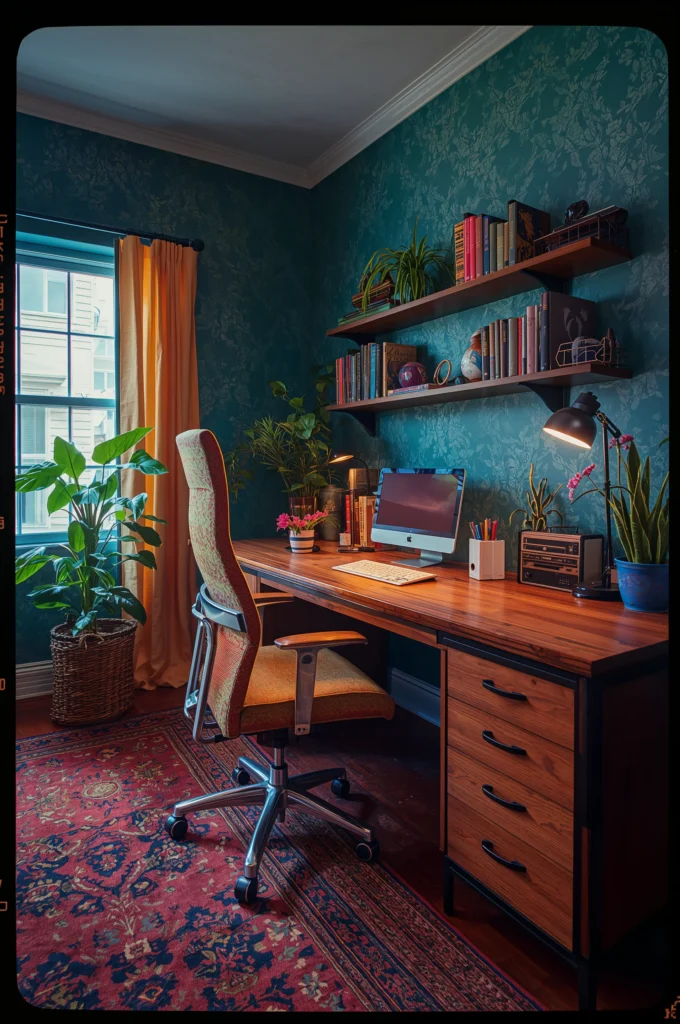
Technology has shaped a new interior design trend: smart homes. From voice-controlled lighting to automated blinds, smart devices blend convenience with style. In the USA, more homeowners are adopting smart thermostats, security cameras, and connected appliances. These innovations not only improve daily living but also increase home value. The challenge is to integrate tech seamlessly into décor. For example, sleek smart speakers in neutral colors can blend into any room. Concealed charging stations and built-in smart hubs keep spaces clutter-free. This interior design trend reflects the modern lifestyle, where efficiency, comfort, and design merge seamlessly.
11. Textured Fabrics and Layering
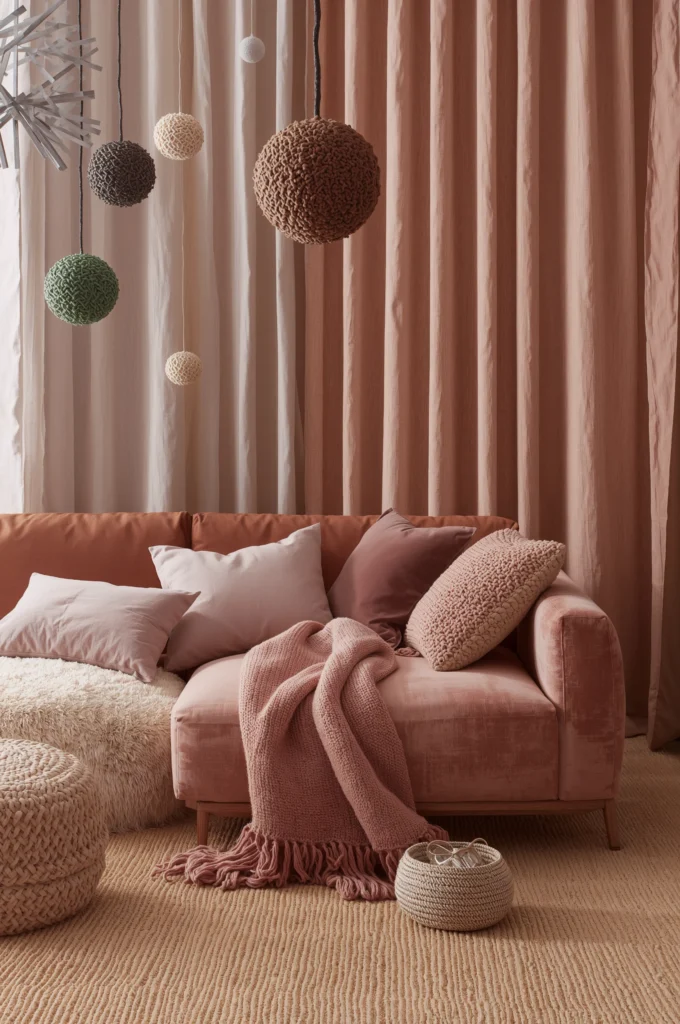
Layered textures are a major interior design trend, adding depth and coziness to spaces. Think chunky knit throws, velvet cushions, linen curtains, and shag rugs all in one room. Combining different textures creates a sensory experience while elevating simple décor. For example, pairing a leather sofa with a wool throw and woven basket adds instant warmth. Neutral palettes benefit from texture, as layering prevents the space from feeling flat. In bedrooms, mixing cotton sheets with velvet pillows and wool blankets makes the bed inviting. This interior design trend encourages comfort while showcasing creativity through textiles.
12. Japandi Style
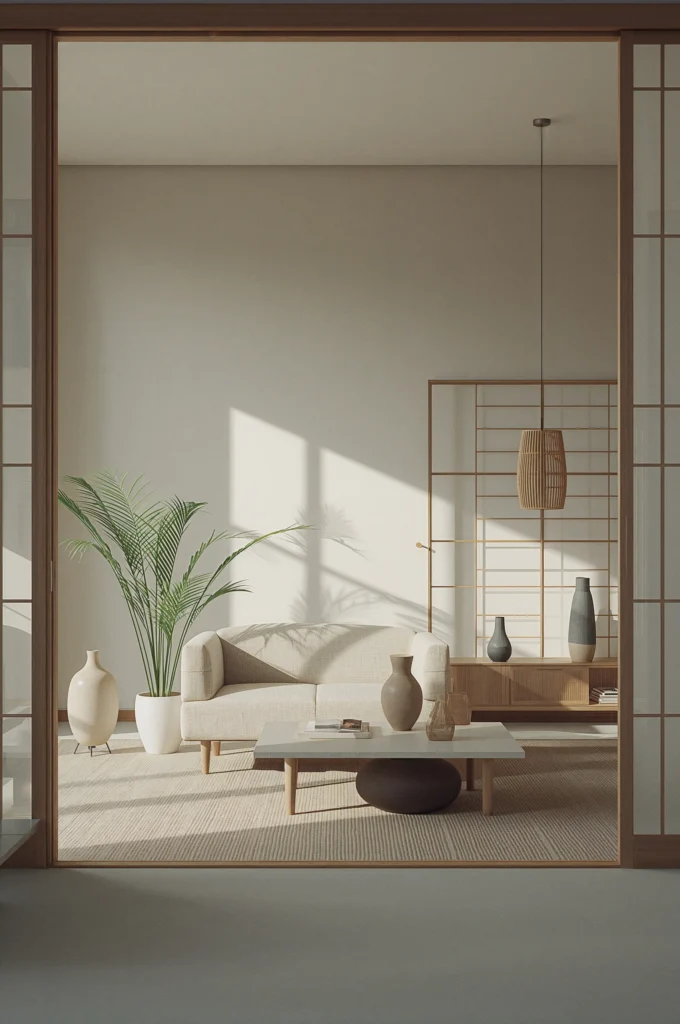
Japandi, a blend of Japanese and Scandinavian design, has become a sought-after interior design trend. It combines minimalism, functionality, and natural beauty. The color palette is neutral, often with soft whites, muted grays, and warm wood tones. Furniture is simple yet purposeful, with clean lines and low profiles. Natural light and open spaces are emphasized, creating calm and balance. Décor is minimal but intentional—ceramic vases, bamboo lamps, or linen fabrics add quiet beauty. Plants are used sparingly but thoughtfully, often in simple pots. This interior design trend promotes mindfulness and serenity, making it perfect for those seeking calm in a busy lifestyle.
13. Industrial Elements
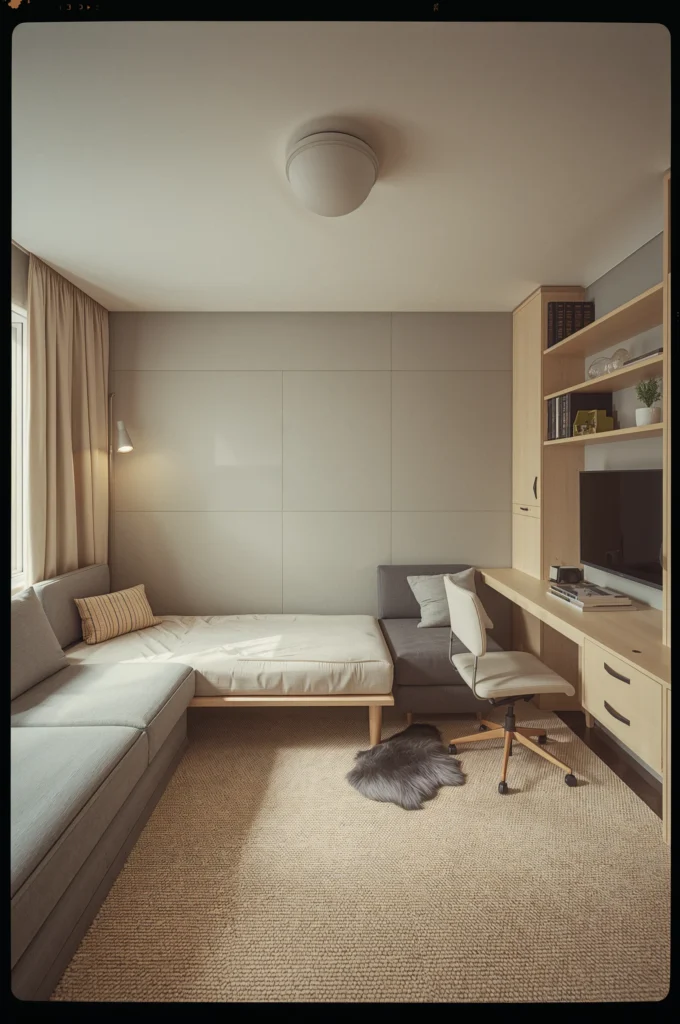
The industrial look remains a strong interior design trend, especially in urban areas. Exposed brick walls, metal fixtures, and reclaimed wood define this style. Neutral colors like gray, black, and brown dominate, often softened with warm lighting. Industrial interiors embrace raw, unfinished aesthetics, but they can be cozy when paired with textiles like rugs and cushions. For example, a loft-style apartment with exposed ductwork can feel inviting with layered textures. Vintage Edison bulbs or black steel shelving add character. This interior design trend works well in both small apartments and large open spaces, offering an edgy yet functional vibe.
14. Curved Furniture
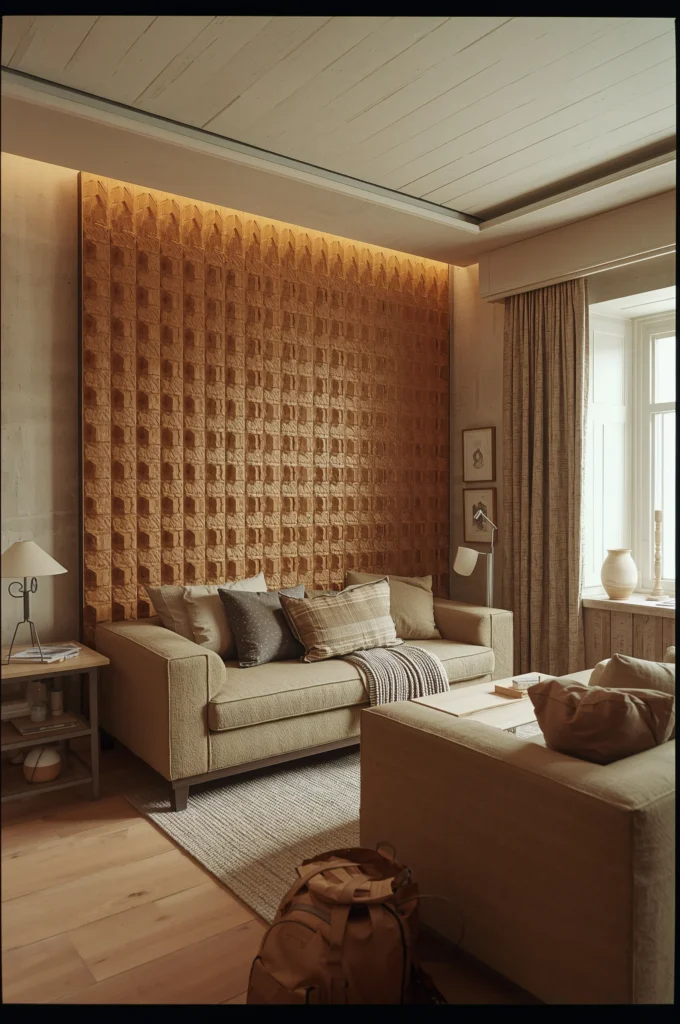
Curved furniture is making waves as a refreshing interior design trend. Instead of sharp lines, soft rounded edges dominate sofas, chairs, and tables. Curves create a sense of flow and softness, making rooms feel more inviting. A curved sofa, for example, becomes a natural conversation piece in the living room. Rounded coffee tables and arched headboards also embrace this aesthetic. The trend works particularly well in modern spaces, where curves break the rigidity of straight lines. This interior design trend balances elegance with comfort, perfect for homeowners seeking a softer, more approachable style.
15. Grandmillennial Style
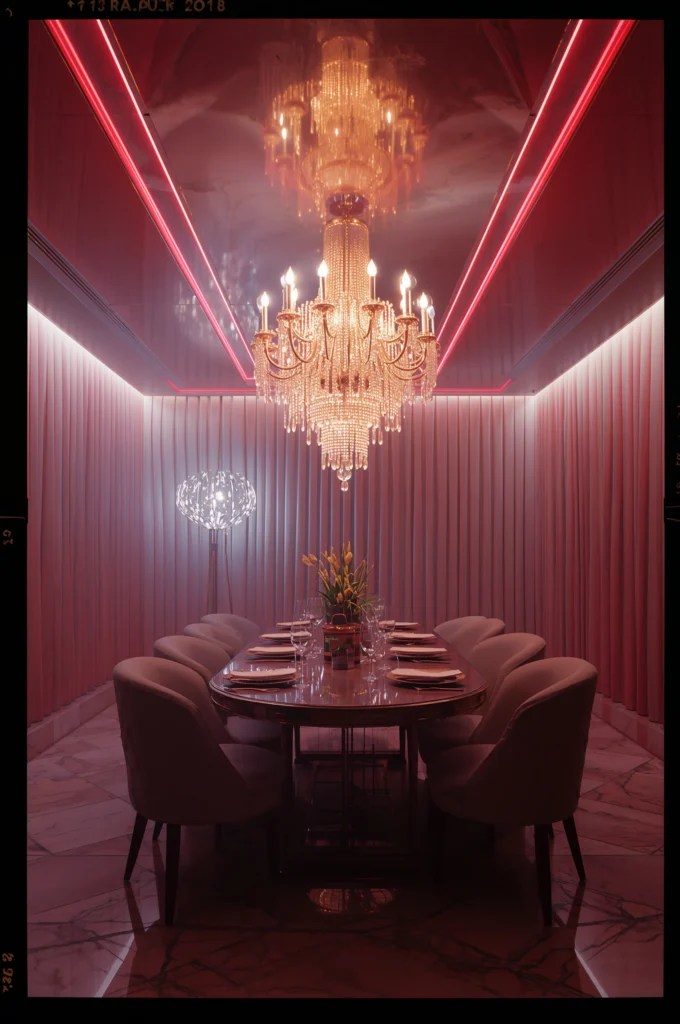
Grandmillennial style has emerged as a quirky, nostalgic interior design trend. It blends traditional elements—like floral prints, antique furniture, and needlepoint—with modern sensibilities. Imagine your grandmother’s décor reimagined with a modern twist. Floral wallpapers, vintage china, and ornate mirrors are popular features. To avoid looking outdated, mix these with contemporary furniture or minimal accessories. The style celebrates personality and coziness, appealing to those who want a break from minimalist spaces. This interior design trend is charming, expressive, and full of character.
16. Outdoor Living Rooms
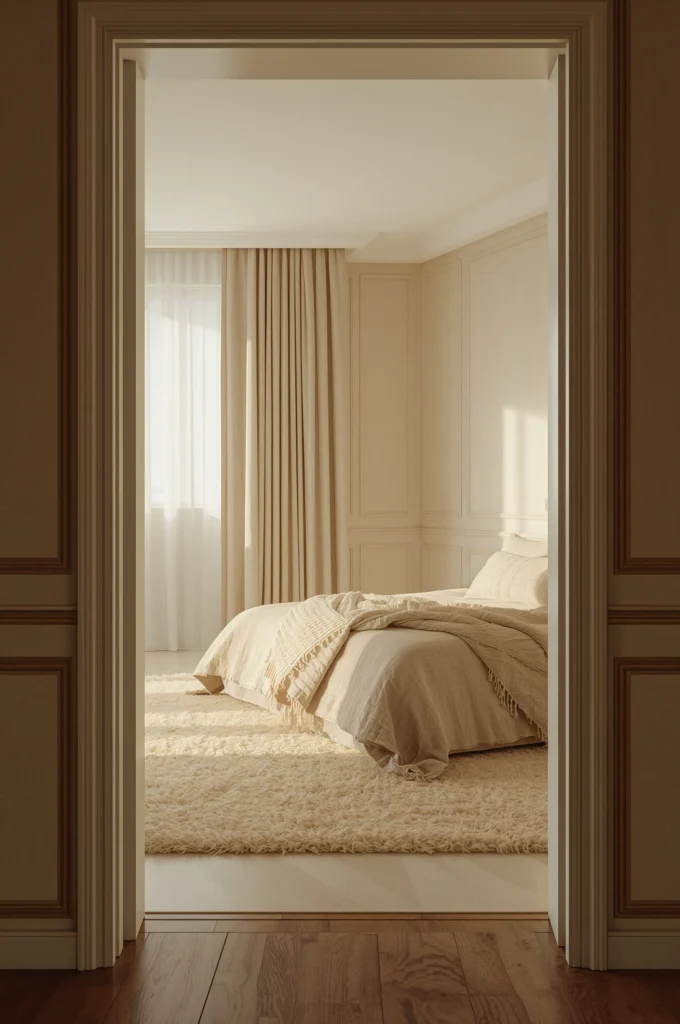
Creating outdoor living rooms is a rising interior design trend, especially in the USA where patios and backyards are treasured spaces. Comfortable seating, rugs, and lighting bring indoor comfort outside. A sectional sofa with weather-resistant cushions, string lights overhead, and a fire pit create a cozy retreat. Outdoor kitchens and dining tables make entertaining effortless. Even small balconies can adopt this trend with foldable furniture and potted plants. This interior design trend blurs the line between indoors and outdoors, expanding usable living space and creating perfect areas for relaxation.
Conclusion
Interior design trends for 2025 show a mix of practicality, comfort, and creativity. From the natural serenity of biophilic design to the boldness of statement walls, these ideas prove that style can meet function. Whether you’re drawn to minimalist Japandi or nostalgic Grandmillennial charm, each interior design trend offers something unique for your home. By embracing these ideas, you can refresh your space in ways that reflect both your personality and today’s modern living needs.

